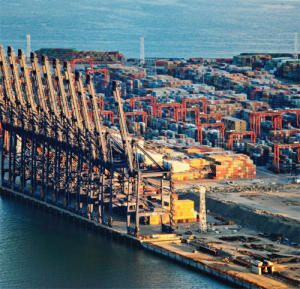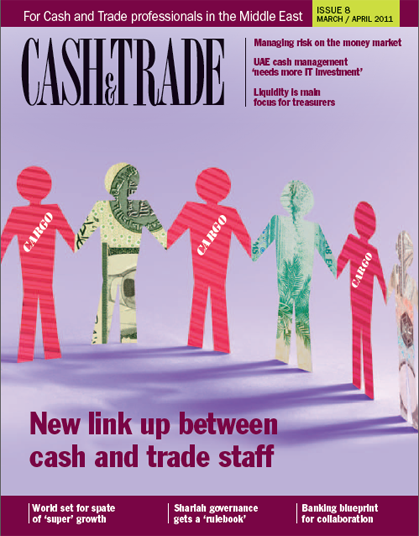China will overtake the US to become the world’s largest economy by 2020, helped by faster expansion and an appreciation of its currency, according to Standard Chartered. “We believe that the world is in a ‘super-cycle’ of sustained high growth,” the bank’s economists said in a report published recently. “The scale of change over the next 20 years will be enormous.” China overtook the UK as the fourth largest economy in 2005 and toppled Germany from third place in 2007. By 2030, the Chinese economy will be twice as large as that of the US and account for 24 per cent of global output, up from nine per cent today, said the bank’s 152-page Super-Cycle Report. Also, it asserted that within the next decade India would surpass Japan to be the third-biggest economy. The key point in the report is that the world may be experiencing its third “super-cycle”, which is defined as “a period of historically high global growth, lasting a generation or more, driven by increasing trade, high rates of investment, urbanisation and technological innovation, characterised by the emergence of large, new economies, first seen in high catch-up growth rates across the emerging world”. It’s said that the “super-cycle” started in 2000 and is expected to last at least another couple of decades, seeing the global economy reach more than US$300trn in size by 2030, up from US$62trn today. It has already doubled between 2000 and 2010. The developed economies will do well through the “super-cycle”, but the emerging markets will do much better, says the report. As a result, the global balance of economic power will shift decisively from the West to the East. The key drivers The report asserts that the key drivers of the “supercycle” will be increased trade, especially among emerging markets, where there will be rapid industrialisation and urbanisation and greater middle class growth. The number of people living in cities will grow to five billion in 2030, up from 3.4 billion today. Living standards, as measured by real per capita income, will increase nine-fold in China and India between 2000 and 2030 and rising personal incomes will push billions of people into the middle classes, driving up consumption, which will spur domestic economic growth. China is likely to grow at a 6.9 per cent rate over the next two decades and overtake the US to become the world’s

economic superpower within a decade. Meanwhile, India is likely to grow at an average 9.3 per cent pace over the same period and tail the US as the third largest economy by 2030, the report forecasts. The world has seen two such “super-cycles” before, says the report. The first ran from 1870 until 1913, the eve of the First World War. The second began with the end of the Second World War and lasted until the oil crisis in 1973. The current “super-cycle” started at the turn of the 21st century and is likely to extend until at least 2030. “It will unlock the growth potential in emerging markets, especially across the populous economies of India, China, Indonesia, the Middle East, Africa and Latin America. “Hundreds of millions of people are likely to enter the global workforce, driving urbanisation, high rates of investment and technological innovation. While earlier ‘super-cycles’ were driven by the comparatively small populations in the West, the current super-cycle will involve 85 per cent of the world population.” Challenges and cautions China has expanded by an average 10.3 per cent a year over the past decade compared with an average 1.8 per cent for the US. The report estimates growth will slow to an annual eight per cent by the middle of the current decade, easing to five per cent between 2027 and 2030. China’s comparatively faster expansion, together with an expected 25 per cent appreciation of the yuan, should be enough for its nominal gross domestic product to exceed that of the US by the end of the decade. However, China could fall “abruptly off the fast track’’ as the Soviet Union and Latin America did in the 1970s and Indonesia and Thailand experienced in the 1990s, says the report. It feels that the economy is “unbalanced” and faces considerable risks, including a widening of imbalances, asset bubbles, over-capacity and rising bad loans that could lead to a serious decline. And a 10 per cent decline in investment in China would make it very difficult to achieve any GDP growth at all. “If we are right about this being another ‘super-cycle’, it does not mean that growth is strong and continuous over the whole period,” says the report. “For instance, the first ‘super-cycle’ had bouts of high inflation and of deflation. Much will depend on monetary policies adopted across the globe.” Previous growth “super-cycles” were characterised by stable currencies, where there were exchange rates linked to gold or silver, monetary unions and the Bretton Woods agreement (see panel), said the report. Also, current concerns over “currency wars” highlight the challenges with the present system, it suggests. “The possibility of some formal move towards currency stability at a global level cannot be ruled out. However, in the present context, it seems hard to predict. Greater currency intervention may be plausible, and, over time, one should expect to see more countries managing their currencies against a basket of currencies of the countries with which they trade. Managed floats and currency baskets may become more of a norm for currency policy.” Implications for financial assets Financial markets may not have fully factored in either the scale or the profound changes that are likely to take place, the report cautions. However, plenty of opportunities will be provided across all asset classes for investors and companies. For long-term investors, the “super-cycl
 Cash And Trade Magazine For Cash and Trade professionals in the Middle East
Cash And Trade Magazine For Cash and Trade professionals in the Middle East




